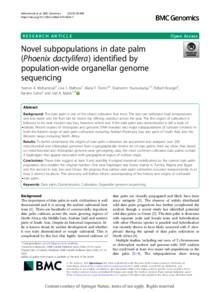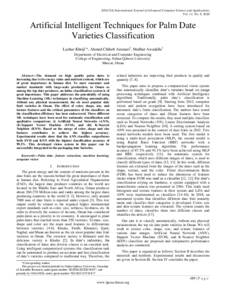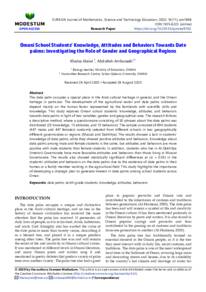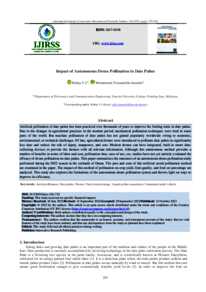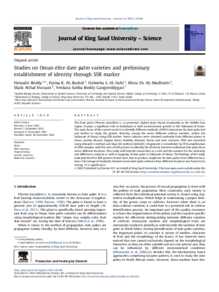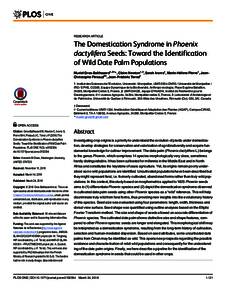Document
Novel subpopulations in date palm (Phoenix dactylifera) identified by population-wide organellar genome sequencing.
Identifier
DOI: 10.1186/s12864-019-5834-7
Source
BMC Genomics. v. 20, 1, 498 p. [1-8].
Contributors
Mathew, Lisa S. , Author
Torres, Maria F., Author
Younuskunju, Shameem., Author
Krueger, Robert., Author
Suhre, Karsten., Author
Malek, Joel A. , Author
Country
United Kingdom.
City
London
Publisher
BioMed Central Ltd.
Gregorian
2019-06-17
Language
English
Subject
English abstract
Background: The date palm is one of the oldest cultivated fruit trees. The tree can withstand high temperatures and low water and the fruit can be stored dry offering nutrition across the year. The first region of cultivation is believed to be near modern day Iraq, however, where and if the date palm was domesticated is still a topic of debate. Recent studies of chloroplast and genomic DNA revealed two major subpopulations of cultivars centered in both the Eastern range of date palm cultivation including Arabian Peninsula, Iraq and parts of South Asia, and the Western range, including North Africa. Results: To better understand the origins of date palm cultivation we sequenced and analyzed over 200 mitochondrial and chloroplast genomes from a geographically diverse set of date palms. Here we show that, based on mitochondrial and chloroplast genome-wide genotyping data, the most common cultivated date palms contain 4 haplotypes that appear associated with geographical region of cultivar origin. Conclusions: These data suggest at least 3 and possibly 4 original maternal contributions to the current date palm population and doubles the original number. One new haplotype was found mainly in Tunisia, Algeria and Egypt and the second in Iraq, Iran and Oman. We propose that earliest date palm cultivation occurred independently in at least 3 distinct locations. This discovery will further inform understanding of the history and origins of cultivated date palm.
ISSN
1471-2164
Category
Journal articles

